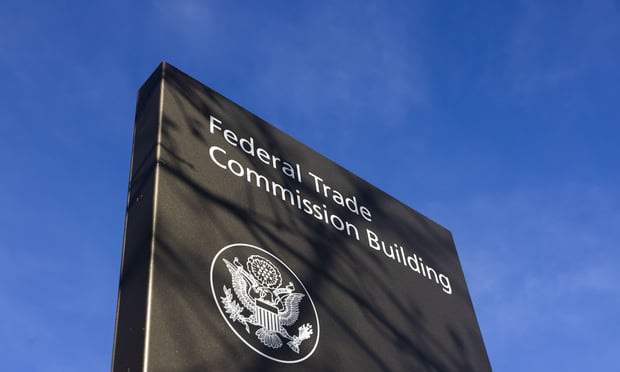Delta Cockins just got back from an all expenses paid tripto Paris, care of her employer Betabrand. Her company covered thecost of a “wonderful” hotel next to the Louvre and an”amazingdirect flight,” says Cockins, an inventory planner at the SanFrancisco-based online retailer. Her coworkers pitched in $500for spending money, and Cockins used the cash to buyher first pair of Christian Louboutin heels. “I'm always going tosay Betabrand owns one of those shoes,” she said.
|Cockins's journey was part of Betabrand's FlyAway program.Every six to eight weeks, a lucky someone from the office gets sentabroad and the company covers airfare and lodging. To qualify forthe deal, the employee can't have traveled outside thecountry—ever. Cockins, 41, never had a passport. Betabrand alsoexpects the globetrotting employee to stay connected through socialmedia and deliver a company-wide trip reportafterwards.
|A handful of companies have pushed the boundaries of fringebenefits by offering subsidized travel on top of the morefamiliar policies promising paid time-off and the avantgarde employers promising unlimited vacation time. Airbnb,Evernote, AFAR, G Adventures, and Think Parallax are among the newwave of employers putting up between $1,000and $4,000 for some or all of their workers to get out oftown. Dreamy, right?
|Betabrand Chief Executive Chris Leland thought up the ideawhen, at a happy hour last fall, he learned how few of hisemployees had traveled abroad. He immediately acquired a milesrewards credit card and used the points collected doing business asusual to fund the first trip in January. He thinks his relativelymodest investment—only a few of his 60 employees qualify forfree trips—has paid off: “It adds to the workplace life here ofcelebration and shared adventure,” said Leland. “I know that soundsa bit inflated but it's really true. It's not that we're sendingpeople off on these luxurious vacations, we're sending them off onfour- to five-day quests.”
|At most workplaces experimenting with subsidized leisure travel,all employees are eligible to nab a free or almost-freetrip. But reimbursement usually comes with stipulations.Travel is often limited to certain dates when it makes most sensefor people to miss work, and sometimes employees have to dipinto vacation days to cover the time off. Theemployer-sponsored trips also aren't a total vacation from work.AFAR, a San Francisco-based travel magazine, offers a yearly$2,000 stipend for employees to travel to any internationaldestination they haven't visited before. Participants are expectedto post their experiences on AFAR's website.
|Think Parallax, a creative agency in the Bay Area, has turnedits $1,500 travel program into a game. Participants haveto pick somewhere new to visit and keep it a secret from theircoworkers. The travelers leave a trail of digital clueson Instagram and Facebook for people to guess theirwhereabouts. Once they return, the destination is described ina presentation.
|From an employer perspective, the perk falls under professionaldevelopment. Yes, it's about retention and a way to incentivizeworkers to take time off. Americans don't take vacations. Nearlyhalf of U.S. workers didn't take a day off in 2014, accordingto a Skift survey, and federal statistics show that a quarter ofthe civilian workforce receives no paid vacation time. ”Thisis a way of reemphasizing how important work-life balance is,”said Guusje Bendeler, the creative director at Think Parallaxwho lives in Holland, land of work- life balance. Employers alsoexpect a return on their investment: “We see it more as theseexperience trips that will make them more well rounded humanbeings,” added Bendeler. “That in return that will produce betterwork or better people.”
||The general thinking goes like this: Worldly workers havebetter ideas and broader perspectives, which leads to bettercreative thinking. Studies have linked creativity with travel,particularly the type of immersive experiences that theseprograms mandate. “The key, critical process is multiculturalengagement, immersion, and adaptation,” Adam Galinsky, a professorat Columbia Business School, told the Atlantic. “Someone wholives abroad and doesn't engage with the local culture will likelyget less of a creative boost than someone who travels abroad andreally engages in the local environment.” Many of these companiesrequire employees to engage. Loafing on a beach isn't anoption. “We all love beach vacations,” said AFAR ChiefExecutive Joe Diaz. “If that's all we do on our trips, we comeback and feel like there's something we left on the table.”
|At companies with travel baked into the mission, the benefits ofsending people abroad have an even more tangible effect onbusiness. Diaz credits his program for bringing authenticity toAFAR's content, which has won a James Beard award and otheraccolades. At G Adventures, a travel company, employees can go onone of the company's tours free of charge, giving them a deeperunderstanding of the product.
|To hear employees describe their trips, these sound like dreamvacations. Aislyn Green, an associate editor at AFAR, usedher $2,000 stipend for 10 days in Bali that included“epic food experiences,” a home stay, and luxurious hotels. MaddieLochte, a graphic designer, spent 10 days in New Zealand on ThinkParallax's dime. She climbed mountains and rappelled into caves.Cockins did what she calls a girl's version of Paris. Instead ofspending her days scrambling in and out of museums, she madeperfume, shopped, and indulged in Paris's culinary offerings.
|Employees, as expected, come back convinced the travelsubsidy was worth it. The art and architecture in Auckland gaveLochte ideas for projects, she said, and she also returned toutingmore nebulous benefits such as feeling refreshed as adesigner. Others described changed perspectives on the world thatin turn has influenced their work. After her trip to Bali, forexample, Green says she looks at stories she edits in a differentway.
|That these trips come with strings attached didn't bother any ofthe employees who spoke with Bloomberg. Even those who had touse up their paid vacation time didn't see it as an imposition, andfree money tends to push the vacations in a more adventurousdirection. “The world is completely available to you with this,”said Green. She wouldn't have gone to Bali using her own money.This year, she's thinking of using her allottedstipend on a foodie bike tour through Basque Country.“Knowing that every year you get to take one big trip, that'spretty awesome,” she said. Yes, yes it is.
|Copyright 2018 Bloomberg. All rightsreserved. This material may not be published, broadcast, rewritten,or redistributed.
Complete your profile to continue reading and get FREE access to Treasury & Risk, part of your ALM digital membership.
Your access to unlimited Treasury & Risk content isn’t changing.
Once you are an ALM digital member, you’ll receive:
- Critical Treasury & Risk information including in-depth analysis of treasury and finance best practices, case studies with corporate innovators, informative newsletters, educational webcasts and videos, and resources from industry leaders.
- Exclusive discounts on ALM and Treasury & Risk events.
- Access to other award-winning ALM websites including PropertyCasualty360.com and Law.com.
*May exclude premium content
Already have an account? Sign In
© 2024 ALM Global, LLC, All Rights Reserved. Request academic re-use from www.copyright.com. All other uses, submit a request to [email protected]. For more information visit Asset & Logo Licensing.







